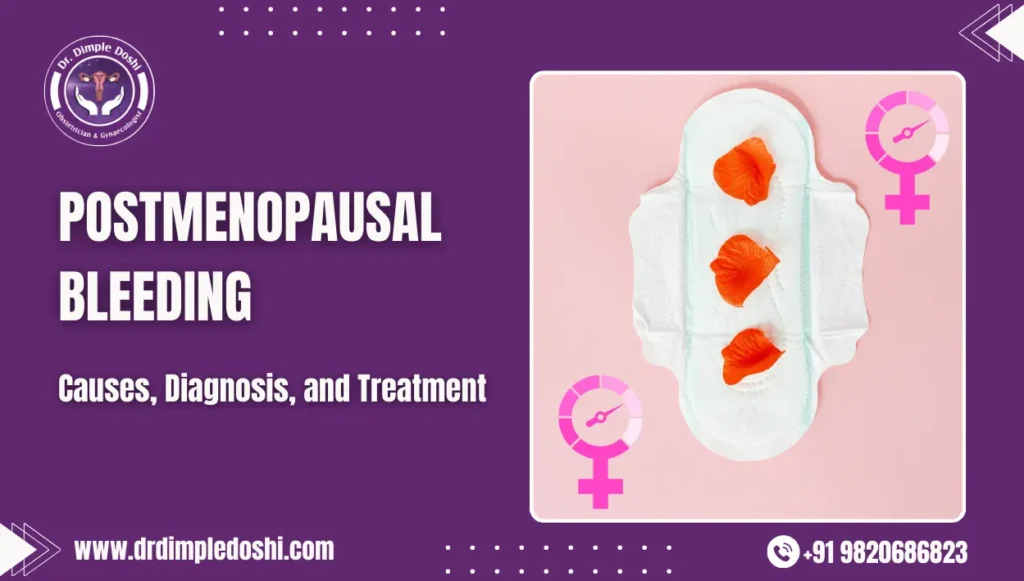Postmenopausal Bleeding: Causes, Diagnosis, and Treatment

Table of Contents
Introduction
Postmenopausal bleeding (PMB) can be alarming for women who have gone through menopause. While it is not always a sign of a serious condition, it is essential to understand its causes and seek medical evaluation promptly. In this blog, we will discuss what postmenopausal bleeding is, its potential causes, diagnostic approaches, and treatment options.
What is Postmenopausal Bleeding?
Postmenopausal bleeding refers to vaginal bleeding that occurs after a woman has not had a menstrual period for 12 consecutive months. Any bleeding—whether spotting or heavy flow—should be assessed by a healthcare provider to rule out any underlying conditions.
Causes of Postmenopausal Bleeding
There are several possible causes of PMB, ranging from benign to serious conditions:
Postmenopausal bleeding can occur due to a number of possible reasons, including:
- Endometrial atrophy: A thinning of the uterine lining, caused by lower estrogen levels
- Endometrial polyps: Growths that develop in the uterine lining, usually benign
- Endometrial hyperplasia: A thickening of the uterine lining, which can lead to cancer
- Fibroids: Non-cancerous growths in the uterus
- Vaginal atrophy: A thinning of the vaginal lining, caused by lower estrogen levels
- Infection: An infection of the cervix, uterus, or bladder
- Hormone therapy: Hormone replacement therapy (HRT) or other medicines can cause endometrial hyperplasia
- Cancer: Endometrial, cervical, or ovarian cancer can cause bleeding
Other possible causes include:
- Sexual trauma
- Bleeding from nearby body parts, such as the urinary tract or rectum
Diagnosis of Postmenopausal Bleeding
To determine the cause of PMB, doctors may recommend the following tests:
- Pelvic Exam – A physical examination to check for abnormalities.
- Transvaginal Ultrasound – An imaging test to evaluate the uterine lining.
- Endometrial Biopsy – A sample of the uterine lining is taken to check for abnormal cells.
- Hysteroscopy – A procedure that allows doctors to examine the inside of the uterus using a thin camera.
Treatment Options
The treatment for PMB depends on the underlying cause:
- Endometrial Atrophy – Estrogen therapy may help strengthen the uterine lining.
- Polyps – Surgical removal may be necessary if they are causing symptoms.
- Endometrial Hyperplasia – Treatment may involve progesterone therapy or, in severe cases, hysterectomy.
- Infections – Antibiotics may be prescribed.
- Cancer – If cancer is diagnosed, treatment options may include surgery, radiation, or chemotherapy.
When to See a Doctor
Postmenopausal bleeding should never be ignored. If you experience any vaginal bleeding after menopause, schedule an appointment with a gynecologist immediately. Early diagnosis can help prevent complications and ensure appropriate treatment.
Conclusion
While postmenopausal bleeding can have many causes, ranging from benign conditions to more serious concerns, seeking medical advice is crucial. Regular check-ups and prompt evaluation of any unusual symptoms can help maintain your reproductive health even after menopause. If you or someone you know is experiencing postmenopausal bleeding, consult a gynecologist for a thorough examination and proper guidance.
